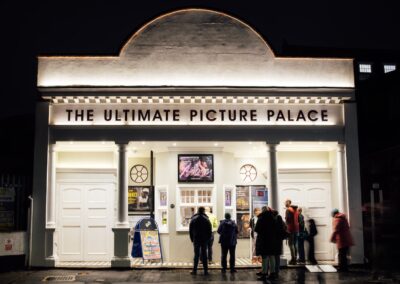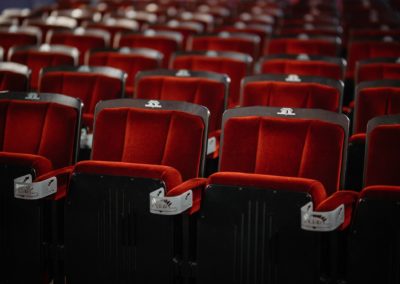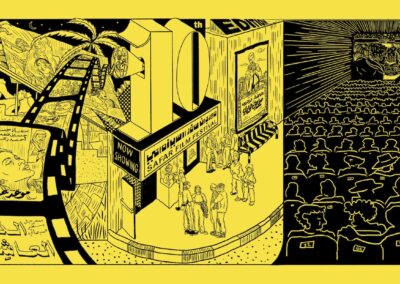There have been a lot of great horror movies but rarely do these films appear in lists of great films. In fact, if you don’t include Psycho or David Lynch’s Mulholland Drive, which hardly count as “horror” films anyway, then the BFI greatest films of all time list from 2012, contains a total of zero “proper” horror movies. Almost every other genre you can think of is represented, except this one. So why is that? And which, if any, horror film deserves “canonization?”
The answer is an obvious one: Stanley Kubrick’s flawed but brilliant 1980 adaptation of Stephen King’s novel ‘The Shining’, which, lest we forget, almost no one (especially the book’s author) liked, when it was first released over 40 years ago. Boy, has this one improved with time.
Essentially Kubrick, who worked in a very diverse range of genres (sci-fi, film noir, war etc.) needed to find a relatively commercial project that would “make up for” the relative failure of his 1975 masterpiece Barry Lyndon and the success of both William Friedkin’s The Exorcist in 1974 and Richard Donner’s The Omen in 1976 meant that the big studios (in this case Warner Brothers), at long last, were willing to back horror films. After much deliberation (he apparently read piles of the things) Kubrick finally settled on King’s third novel, rejecting, however, the author’s own screenplay (and choice of actor to play the lead role of writer’s blocked caretaker Jack Torrance, which was finally taken by Jack Nicholson – although, surprisingly there were a few other names being bandied around, including, surprisingly, Robin Williams).
Ever the perfectionist, once the elaborate sets were constructed at Elstree Studios, Kubrick would then spend over a year on principal photography, demanding take after take and altering the script almost daily. The whole process was recorded by Kubrick’s 17-year-old daughter Vivian for a fascinating documentary about Kubrick’s working methods, which shows just how painful the production was for both Nicholson and also Shelley Duvall, who was cast as Torrance’s (apparently) submissive wife Wendy. This can be found as an extra on most DVD versions of the film and is well worth watching (as is, Room 247, the 2012 documentary by Rodney Ascher, which explores the film’s symbolism). Fact fans might also like to note that the film’s poster was designed by Saul Bass, who did great work for Hitchcock; barman Joe Turkel was in both Kubrick’s The Killing and Paths of Glory and also played Tyrell in Ridley Scott’s Blade Runner and that its “sequel,” Dr Sleep, is okay – the book certainly worth reading.
The Shining has been included in the brief UPP October season because it is most definitely a film about what happens when “ordinary” people are pushed “over the edge” and their sanity is called into question. This is something which horror films handle very well indeed – Nic Roeg’s masterpiece Don’t Look Now and Romero’s Dawn of The Dead, for example, could also have easily been included in the season, sharing, as they do, The Shining’s themes of mental breakdown and madness. Interestingly, in addition, they are films which deal with the idea of family, revealing the monster that sometimes lies at its heart.
Importantly, the secular Kubrick stripped away as much “supernatural” jiggery pokery from the novel as possible and deliberately left its ending ambiguous – something that infuriated at the time – the movie appeared to just run out of steam; although, when watched today, its final image makes much more sense than it did back then.
It’s also fair to say that time has been really kind to the performances – Nicholson originally appeared to be woefully “over the top” but his acting appears far more subtle today and Duvall is superb in her (still slightly underwritten) role.
Why you need to see the film on the big screen, when it plays at the end of the month, however, is for its bravura technique. Always a technical innovator, it is Kubrick’s use of the newly developed steadicam that gives the film its cinematic greatness. This portable camera, affixed to the cameraman’s body by complicated hydraulics, allows the audience to float through the “haunted” Overlook hotel, hovering slightly behind the actors and often giving a child’s eye point of view, which allows them to align themselves with the Torrance’s young son, Danny (played by Danny Lloyd). John Alcott’s cinematography is definitely outstanding and, when coupled with the film’s superb sound design and Wendy Carlos’ eerie soundtrack (as Walter, Carlos had also composed the music for A Clockwork Orange in 1971) this becomes a completely overwhelming experience, almost as if, we too, like Jack Torrance, are increasingly lost in the labyrinth – of corridors, carpets, offices, storage rooms and, of course, hotel bathrooms.
And to make things even more innovative, Kubrick keeps the lights on.
The Shining is a horror film which leaves nothing and yet everything to the imagination. It is a brilliant piece of craftsmanship and, in spite its flaws, a stunning piece of cinema – well deserving of its place at the table and, whilst not quite Barry Lyndon or 2001, it’s certainly amongst Kubrick’s best films – which means it’s also one of cinema’s.
Let’s see where it gets ranked in the 2022 BFI list, due at the end of the year.
Let’s also see it together at the UPP and, once again, applaud its ability to glide.
The Shining is screening as part of our ‘Horror On The Brink’ season – see it on Sunday 30th October (17:30) and on Monday 31st October (20:30). Book tickets by clicking HERE.
Dr Andrew C Webber is a Film teacher and examiner with over 30 years’ experience. He currently contributes to both the Cinema of the 70s and 80s magazines (available on Amazon); cassette gazette fanzine (available from cassette pirate on e-bay) and the Low Noise music podcast available on Spotify and Apple podcasts.


